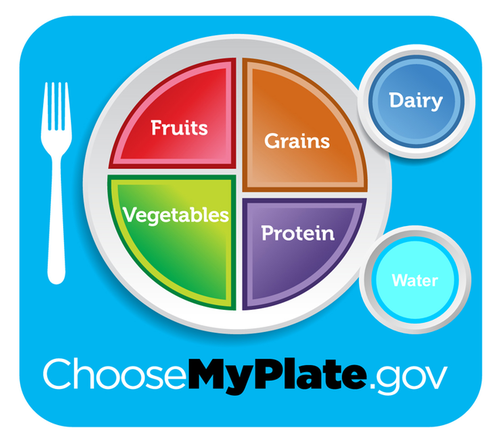
Posts Tagged: Karen Jetter
Eating healthy on a limited budget is possible, but any cuts in SNAP or rise in food costs make it harder
The affordability of healthy food is often cited as a barrier to low-income families eating nutritious meals. A new study published in the Journal of Nutrition Education and Behavior found that with menu planning and access to stores selling items in bulk, the average daily cost for serving healthy meals to a family of four was $25 in 2010 dollars. This cost was consistent with the US Department of Agriculture (USDA) low-income cost of food meal plan, but higher than the cost of the USDA Thrifty Food Plan. The Thrifty Food Plan is the meal plan used by the USDA to determine food assistance benefits.
“This study determined the likelihood that families living in low-income households could create meals that meet the USDA dietary guidelines presented in MyPlate nutrition education materials,” said lead author Karen M. Jetter, Ph.D., of the UC Agricultural Issues Center, which is part of UC Agriculture and Natural Resources. “In addition to food cost, the other factors considered were access to stores, time for meal preparation, and whether the menus included culturally appropriate foods.”
Jetter also cautioned that any reduction in SNAP, the federal Supplemental Nutrition Assistance Program for people with qualifying low incomes, or increase in food costs would make it hard for economically vulnerable families to eat healthy foods.

This project was conducted in collaboration with Northern Valley Indian Health, Inc, and the Mechoopda Indian Tribe of Chico Rancheria where 88 percent of the population surveyed lived in households with an income of less than or equal to $35,000 a year. The menus were created to feed a household with a father, mother, and children ages 7 and 10 with foods the Mechoopda Indian Tribe community liked to eat, met USDA guidelines for healthy eating, and had realistic portions. Menus did not rely on processed foods to reduce the amount of fat and salt in the family diet, were varied so the family would not become bored eating the same foods, did not always require hot meal preparation, and were affordable.
By working closely with the Mechoopda Indian Tribe community researchers, two-weeks of daily menus were developed using meal plans provided by the Mechoopda Indian Tribe community. Although these plans did not meet the nutritional guidelines every day, all categories achieved the recommended levels on average at the end of a two-week period.
“These menus showed that a healthy diet on a budget was achieved by balancing daily targets over two weeks, not every day. This focuses healthy eating on balance rather than being deprived,” said Jetter.
Once the menus were determined, the Mechoopda Indian Tribe community researchers visited 13 grocery stores in Chico to ascertain menu costs. The stores visited were within a 10-minute car ride of 76 percent of the Mechoopda Indian Tribe members and were classified as bulk supermarket, general supermarket, discount market, or specialty market such as a local co-op.
Both bulk and general supermarkets had the highest availability of the items needed for a two-week shopping list, whereas specialty and discount markets lacked as many as 52 of the items needed. Bulk and discount market baskets had the lowest average daily cost of $25, while the specialty market had the highest average cost of $39 per day.
One limitation of the study was the focus on the actual cost of food without considering transactional costs such as the time needed to plan menus, develop shopping lists, research store advertisements, and travel to the bulk supermarket that offered the lowest cost. All of these factors influence a family's ability to sustain a healthy eating plan.
“This research demonstrates that menus that meet USDA guidelines can be purchased by a family of four when shopping at a bulk supermarket, but any reduction in SNAP benefits or increase in food costs would make it difficult for these economically vulnerable families to maintain a healthy lifestyle,” stressed Jetter.
This project was part of a larger project funded by a National Institutes of Health grant.
New Asian citrus psyllid website helps farmers and homeowners connect the dots
The early morning agriculture show on KMJ 580 in Fresno opened this morning with comments about UC's new Asian citrus psyllid website from Beth Grafton-Cardwell, UC Cooperative Extension specialist in the Department of Entomology at UC Riverside.
"There are a lot of websites out there relating to Asian citrus psyllid and huanglongbing disease," Grafton-Cardwell said. "What I tried to do in this one is give it a management focus with action steps: Here's where the bug and disease are, here's what you should do if you're a grower, here's what you should do if you're a homeowner. It connects the dots."
The story notes that the website includes a cost estimator for growers and homeowners that was developed by Karen Jetter, economist with the UC Agricultural Issues Center. The estimator lists effective pesticides and calculates the costs of application.
"It's a good way to figure out how you can help control Asian citrus psyllid," Grafton-Cardwell said.
The new website is at http://ucanr.edu/sites/acp.

The new Asian citrus psyllid website can be found at http://ucanr.edu/sites/acp.

